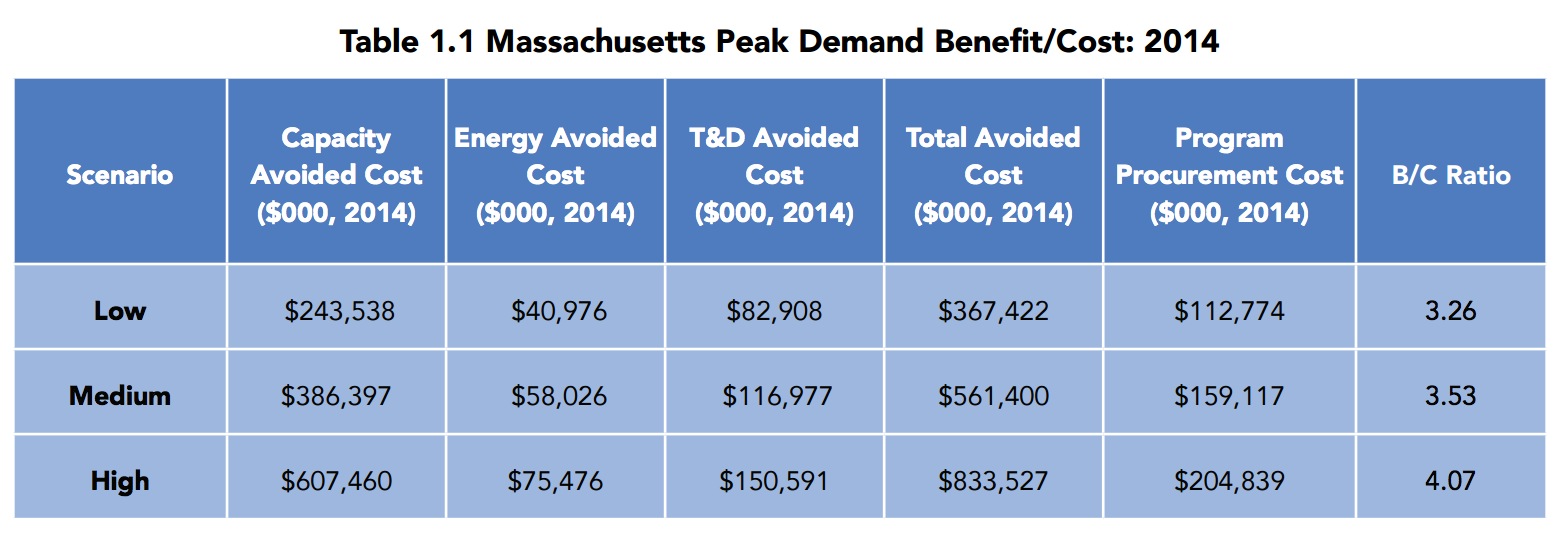ADVANCED ENERGY ECONOMY
Executive Summary
Introduction
After launching a project assessing peak demand and demand response (DR) standards at the state level, Advanced Energy Economy (AEE) discovered that no currently existing study examined existing DR programs or made recommendations on best practices for structuring a DR/peak demand initiative. AEE engaged Navigant to perform quantitative and qualitative analysis in order to gain an understanding of peak demand reduction standards, their potential benefits, and how such standards should be designed.
Navigant has structured this study into two tasks based on the desired outcomes AEE provided. The first task was primarily a modeling exercise to estimate potential benefits and avoided costs from DR programs based on various scenarios of penetration and regulatory activity. The second task involved diving into various aspects of program design to figure out how to optimize the results from peak load reduction mandates, which involved reviewing program evaluations and talking with industry participants from all perspectives to determine which design mechanisms work and which do not.
Massachusetts and Illinois Peak Reduction Modeling
Navigant developed three scenarios to evaluate the benefits and costs of reducing peak demand in Massachusetts and Illinois, addressing two key aspects for each scenario: the ratio of benefits to costs and the feasibility of utilities procuring sufficient resources to meet the demand reduction goals of the scenarios. The study focuses on a 10-year outlook.
- Low Scenario: Actual peak demand does not increase over 10 years.
- Medium Scenario: Actual peak demand declines by 0.25% per year over 10 years.
- High Scenario: Actual peak demand declines by 0.5% per year over 10 years.
The purpose of studying all three scenarios is to illustrate the range of benefits and costs for a peak demand reduction policy.
The avoided costs (i.e., the benefits) and benefit/cost ratios for each scenario are summarized in Table 1.1 for Massachusetts and Table 1.2 for Illinois. In all scenarios the B/C ratios are strongly positive (i.e., >1), indicating that total benefits are significantly greater than the associated costs.
Another key point is that while the B/C ratio tends to increase as peak load is reduced, technical limits to the amount the peak load can be reduced with DR and energy efficiency resources limit how much of this benefit can be realized.
Download full version (PDF): Peak Demand Reduction Strategy
About Advanced Energy Economy
www.aee.net
Advanced Energy Economy (AEE) is a national association of business leaders who are making the global energy system more secure, clean, and affordable. Advanced energy encompasses a broad range of products and services that constitute the best available technologies for meeting energy needs today and tomorrow. Among these are energy efficiency, demand response, natural gas electric generation, solar, wind, hydro, nuclear, electric vehicles, biofuels and smart grid. It’s all the innovations that make the energy we use more secure, clean, and affordable.
Tags: Advanced Energy Economy, AEE, Navigant, Peak Demand, Peak Energy







 RSS Feed
RSS Feed